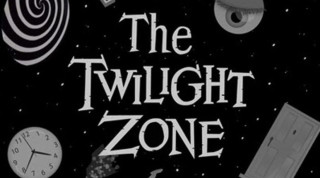Few examples tell Serling’s struggles better than his attempt to bring the Till tragedy to television. Already, when he first pitched the idea to the advertising agency representing the U.S. Steel Hour, an hour-long anthology series on ABC, Serling was pre-censoring himself. Aware that he’d have to make concessions to get the script on screen, he sold the representatives on a story of a Jewish pawnbroker’s lynching in the South. When the idea was greenlit, Serling worked on that script as well as an adaptation for Broadway, where he knew he would have the freedom to tell Till’s story more directly, centering that plot around a black victim.
But Serling misjudged just how restrictive 1950s television could be. After he mentioned that his script-in-progress was based on the Till murder trial in an interview with the Daily Variety, papers around the country picked up the scoop. Thousands of angry letters and wires from the likes of white supremacist organizations followed, threatening both Steel Hour and ABC, who quickly capitulated and ordered changes to Serling's script. Recounting the incident several years later during an interview with journalist Mike Wallace on the eve of the premiere of “The Twilight Zone,” Serling described it as a systematic dismantling of his story. It was “gone over with a fine-tooth comb by 30 different people,” he said, while he was left to attend “at least two meetings a day for over a week, taking notes as to what had to be changed.”
“Station owners and advertising agencies were afraid to offend any segment of their white audiences, even racists, for fear of losing income,” explains journalist Jeff Kisseloff, author of The Box: An Oral History of Television, 1920-1961. As television gained a national audience in the 1950s, the creative freedoms that permeated the earliest days of the medium were quickly being pushed out in an attempt to sell to a white consumer market. Black purchasing power wasn't taken into account. “[A]s late as 1966, one study indicated that black performers constituted 2 percent of the casts of commercials,” according to research by media theorist James L. Baughman. The great Nat King Cole surmised the situation at hand succinctly, “Madison Avenue is afraid of the dark.”
When Serling's teleplay,“Noon on Doomsday,” finally aired on April 25, 1956, any hint of the South was removed from the plot; not even a Coca-Cola bottle could appear, lest viewers invoke the idea of the region. Instead, the opening crawl made clear that the story was set in New England. (Really, all that mattered was that it was set far away from the South: “I’m convinced,” Serling said in the Wallace interview, “they would have gone up to Alaska or the North Pole…except I suppose the costume problem was of sufficient severity not to attempt it.). The victim was now depicted as an unknown foreigner. “Further,” Serling fumed, “it was suggested that the killer in the case was not a psychopathic malcontent but just a good, decent, American boy momentarily gone wrong…”
